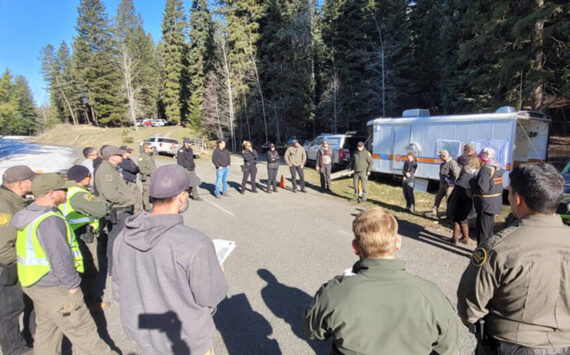Proposed 541 foot dam is not financially viable, says Fortis Inc.
PRINCETON, B.C. – Fortis Inc. will not move forward with their proposed Similkameen River water management and hydroelectric project at this time, according to an announcement made by the company on Sept. 4. Fortis said it made the decision based on the results of its most recent project feasibility studies.
Fortis Generation Similkameen LP proposed a 541 foot (165 meter) concrete facility that was expected to have usable water storage and deliver between 45 to 65 megawatts of electrical capacity along with the associated water management benefits. The dam would have cost between $350-$400 million to construct and provide power to tens of thousands of homes in the Canadian South Okanagan and potentially across the border in the U.S. According to detractors it also had the potential to greatly change the amount of water flowing into Osoyoos Lake.
“We believe that building a water storage hydroelectric facility on the Similkameen River would create many benefits for the area,” said project manager Joseph Sukhnandan. “However, based on the results of our latest engineering and economic studies, we determined the project is not financially viable at this time.”
Fortis Generation Inc. had been doing public consultation, First Nations engagement and feasibility studies for the construction of a water storage/hydroelectric generation facility located on the Similkameen River approximately nine miles south of Princeton, B.C., according to Fortis Inc.
In January, Fortis was granted a two-year investigative use permit to explore the feasibility of the dam on the Similkameen River near the Copper Mountain Mine site, according to the Penticton Western News, a sister publication of the Okanogan Valley Gazette-Tribune.
The Western News went on to report, “According to Fortis’ land tenure application, the dam would have been up to 200 metres (656 ft.) tall, 477 metres (1665 ft.) long, and created a 750-hectare (1853 acres) reservoir behind it to help it generate 45 to 65 megawatts of electricity.
“Company officials said previously that electricity generation alone wouldn’t make the dam financially viable, so they’d also been in contact with groups downstream in the U.S. who would have benefited from ‘flow control’ of the Similkameen River.”
The dam could have benefited the Enloe Dam project proposed by Okanogan County PUD, but is not vital to the success of that project, according to John R. Grubich, General Manager of the public electric utility. If approved, Enloe Dam, which has not generated electricity since the 1950s, would be renovated and the height of the spillway increased and a new powerhouse constructed. Enloe is located on the Similkameen about four miles west-northwest of Oroville.
“The Princeton project would have allowed a more coordinated operation that may have benefited the Enloe project. However, since Enloe is a run of the river project, having the Princeton project shelved does not impact the operation or economics of Enloe,” Grubich said.
Various groups have investigated the feasibility of a water storage and hydroelectric facility in the area since the 1990s. Fortis Generation Similkameen LP may re-evaluate the viability of the project in the future based on customer demand and market conditions, writes the company in their announcement.
Fortis Inc. is the largest investor-owned electric and gas distribution utility in Canada, with total assets approaching $25 billion and fiscal 2013 revenue exceeding $4 billion. Its regulated utilities account for serve more than three million customers across Canada and in the United States and the Caribbean. Fortis owns non-regulated hydroelectric generation assets in Canada, Belize and Upstate New York.
Additional information can be accessed at www.fortisinc.com or www.sedar.com.






